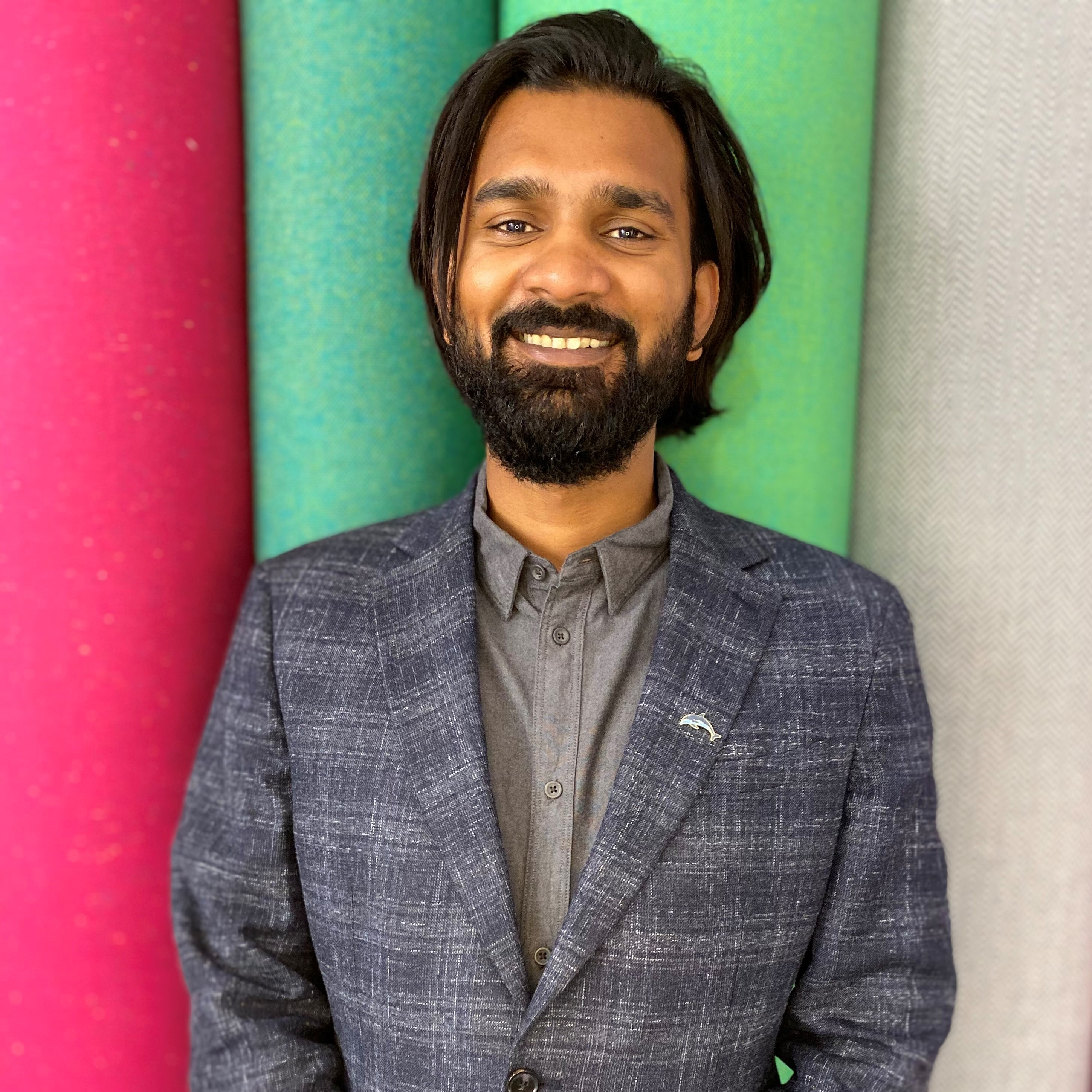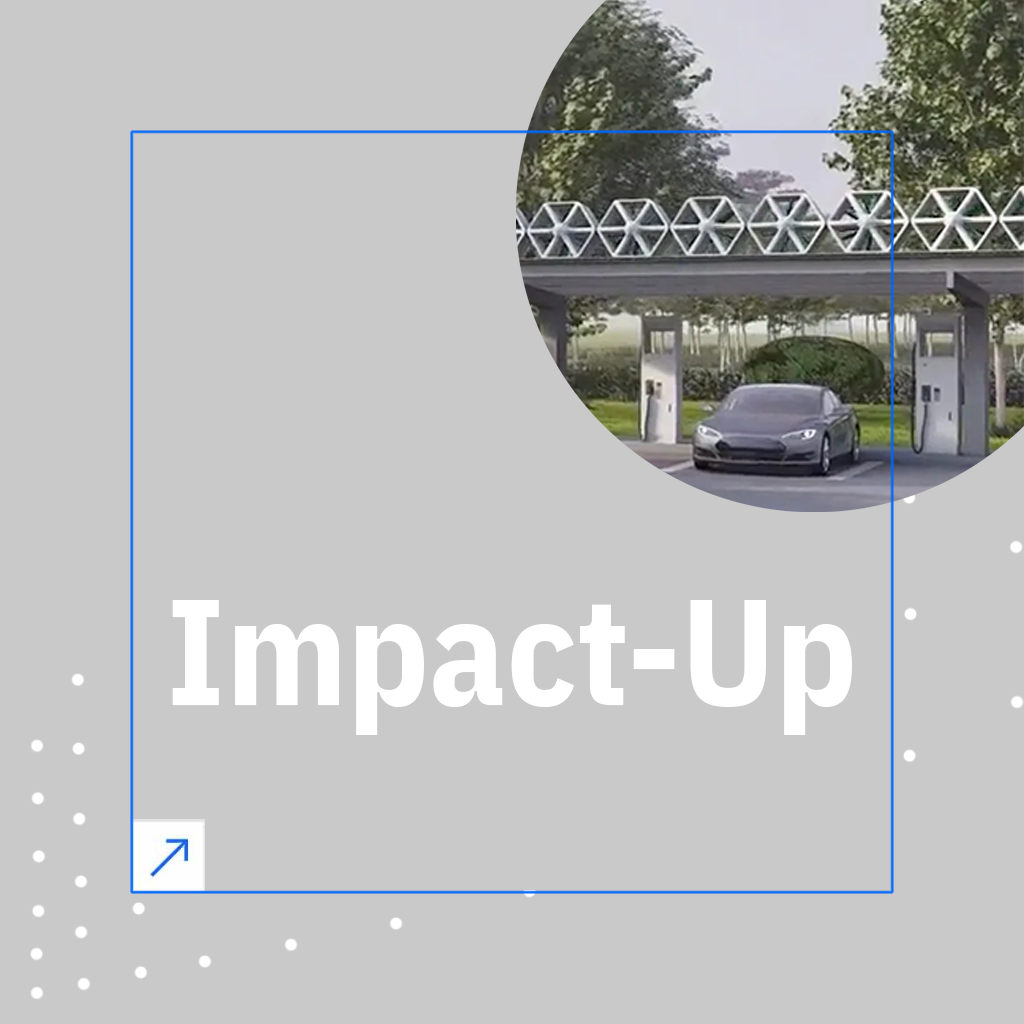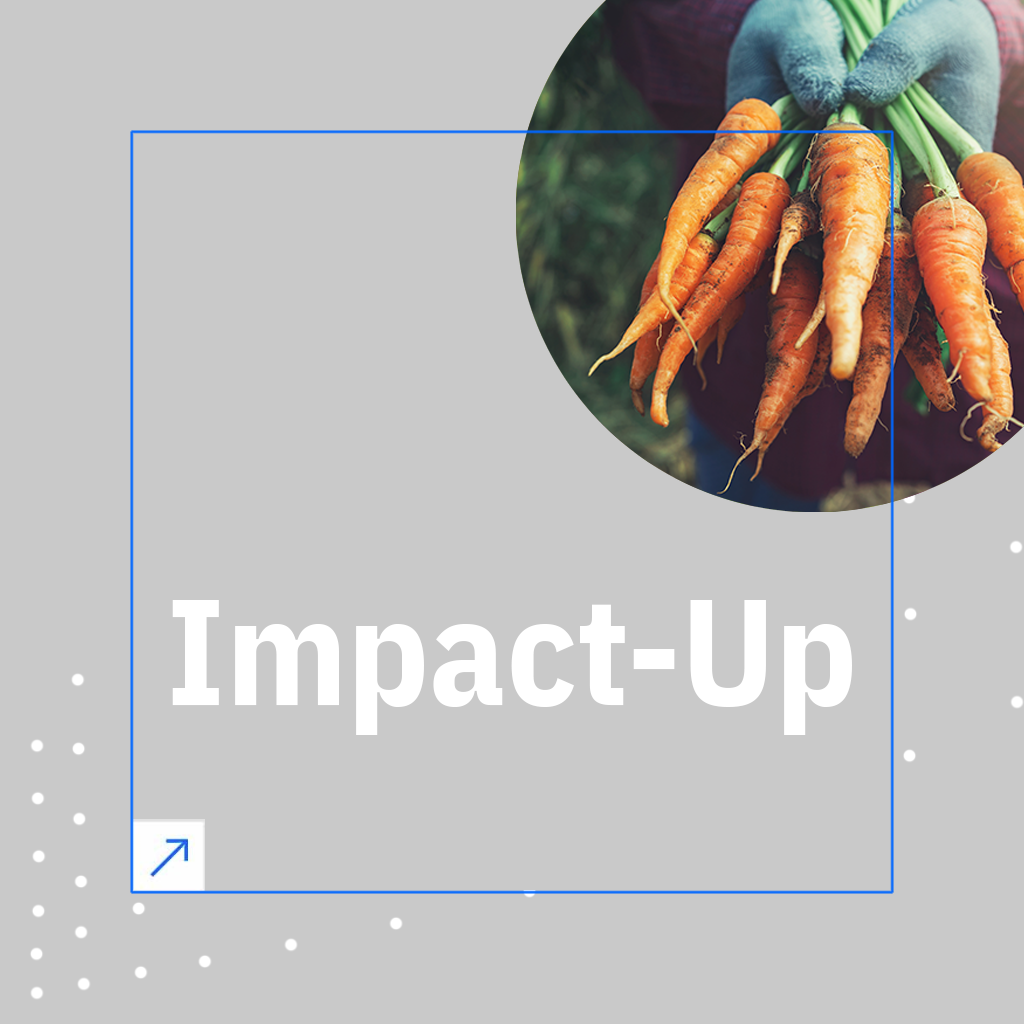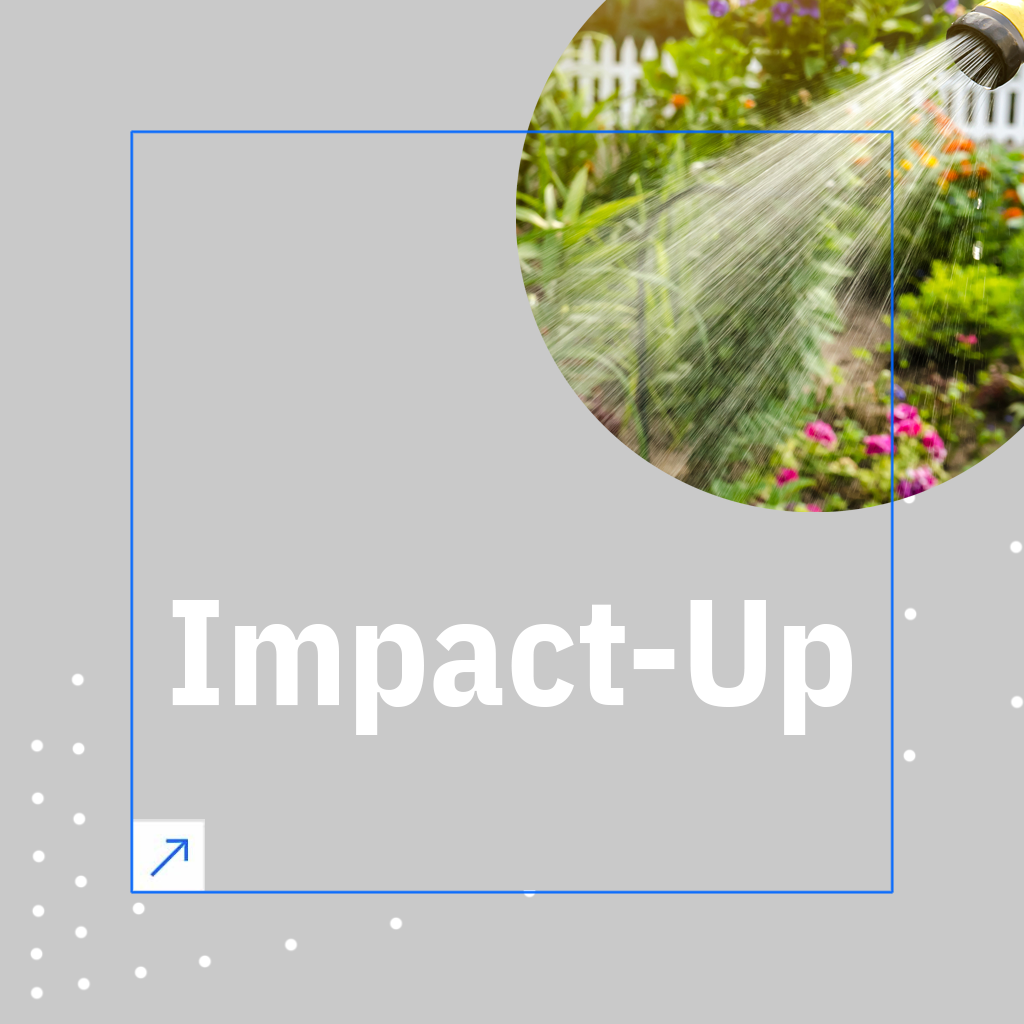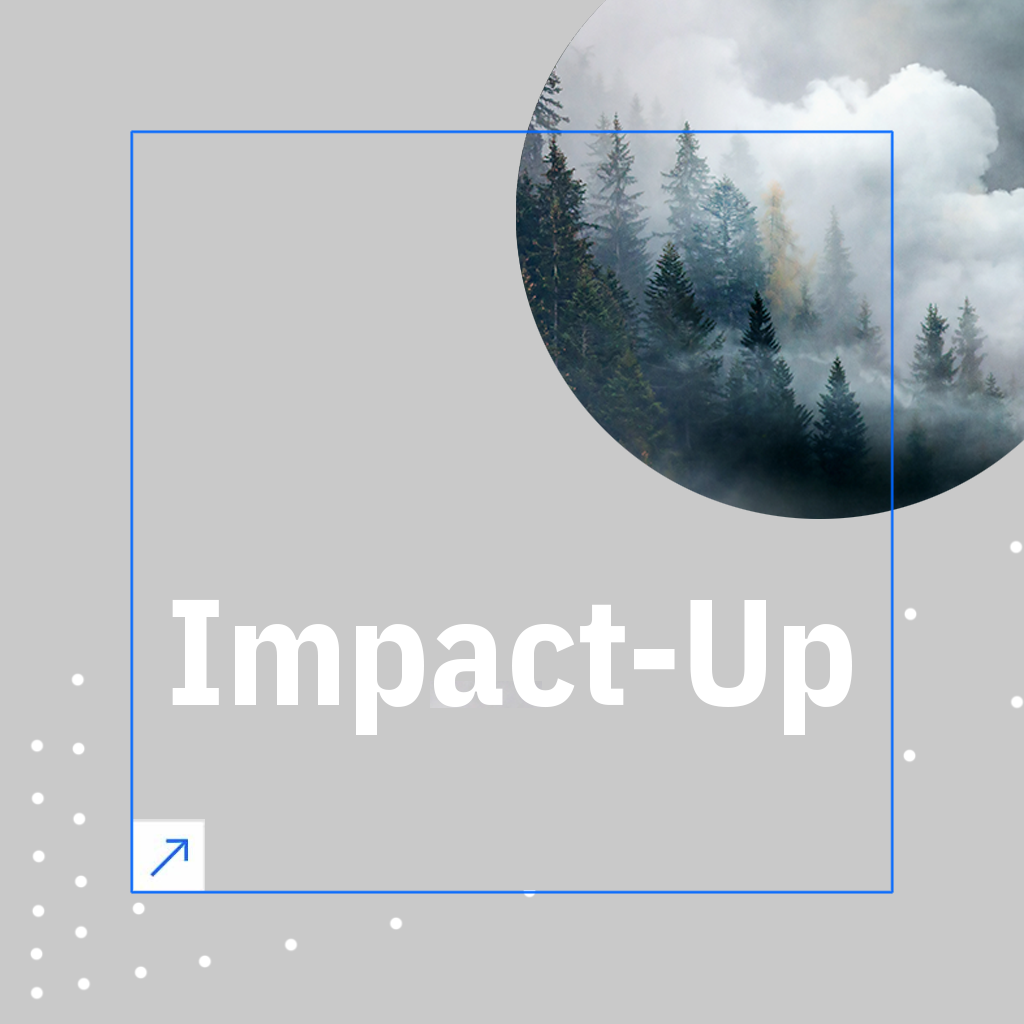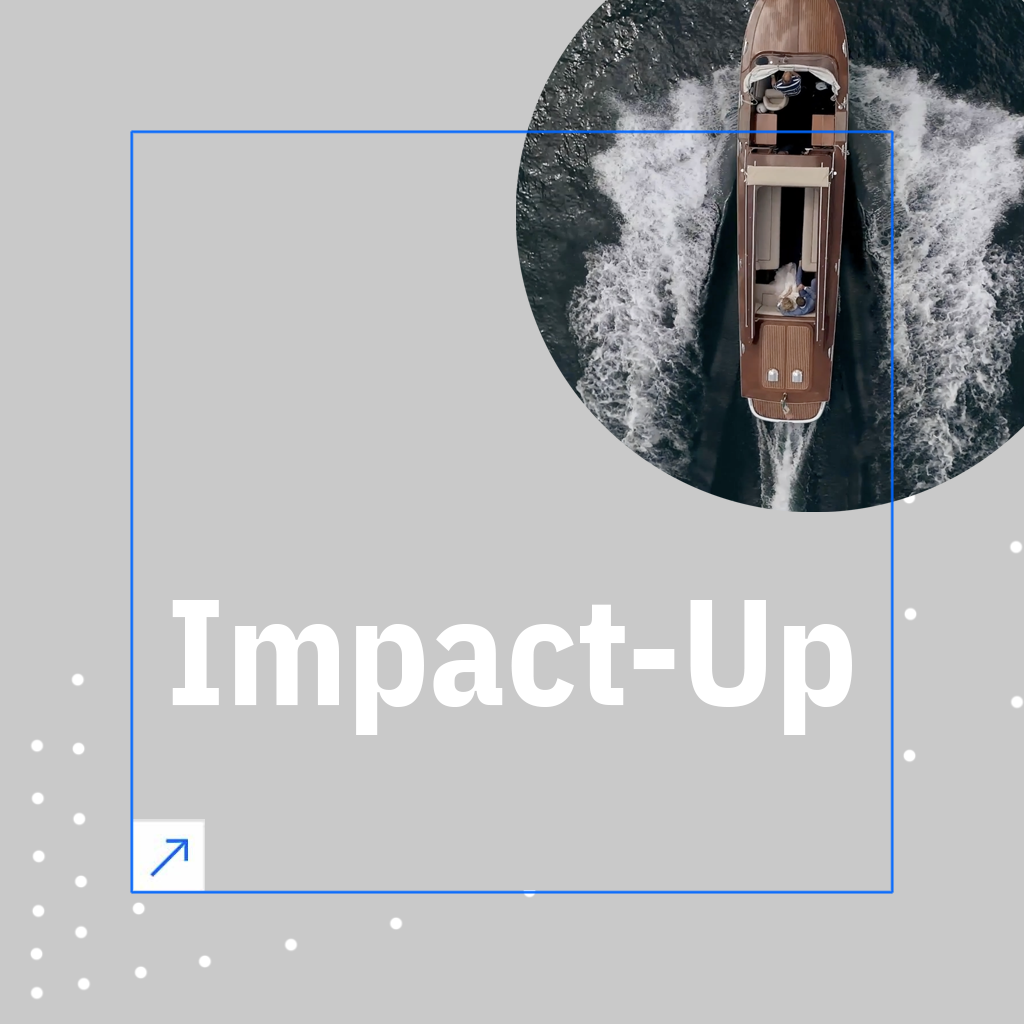Harnessing urban wind, with Katrick Technologies’ Karthik Velayutham
- 0.5
- 1
- 1.25
- 1.5
- 1.75
- 2
Speaker 1: Impact Up.
Michael Jacobs: Welcome to the Impact Up podcast, where you'll hear stories of how businesses big and small are using technology for social good. My name is Michael Jacobs, and I lead Sustainability and Social Innovation at IBM Corporate Social Responsibility. Today, we're talking about the implications of moving to renewable energy. We'll kick things off with an interview between IBM's Daryl Pereira, and Karthikeyan from Katrick Technologies.
Daryl Pereira: Hi there, welcome everybody. My name's Daryl Pereira. I am a Senior Brand and Content Strategist here at IBM. Really happy today to be joined by Karthikeyan, who is the founder of Katrick Technologies. We'll dive into a story about a novel approach to renewable energies. So first, if I could ask you to just tell us a little bit about yourself and how you got to where you are today.
Karthikeyan Velayutham: My name is Karthikeyan Velayutham. I'm the Founder and CTO of Katrick Technologies. The whole idea about bringing a new technologies team, while I was studying naval architecture, at Strathclyde University in Glasgow, I came up with a novel wave energy device. And then about 2016 I was called in by the Scottish parliament to have a look into wind turbine technologies to bring them into the urban environment, especially on the highways and also to the airports, and that's how it's all started, came up with the idea and then we call it Katrick Technologies now.
Daryl Pereira: Talk a little bit then about this idea and what prompted you to explore this particular idea and this technology?
Karthikeyan Velayutham: When I was first told to have a look on the wind turbine technology and to bring them into urban environment, I didn't just come with this idea. First, I wanted to understand what is the problem statement here is because wind turbine works perfectly well, but when I start to explore more, I understood that they work perfectly well at certain heights and when there is no obstruction around them, but in the urban environment the wind is completely different. So, it's not the same wind what a wind turbine is seeing. Plus the other big issue is the inaudible people who wants wind turbine doesn't want in their background. So, we cannot use the same methodology of how to capture the wind that the wind turbine is doing in urban environment. We need to come up with a new solution and that's how when I started to look into this, that's how I came up with this idea.
Daryl Pereira: And let's talk a little bit about the idea then. So, in terms of going from obviously, and I think many of our listeners will be familiar with the idea of the large wind turbines that we might see sometimes out at sea, sometimes in the middle of countryside, but in terms of what you're talking about here then is how you can, which obviously we can gather a lot of wind energy but do it, like you say, at a certain height and need to be a certain scale. When you start thinking about how you'd bring that into urban areas, cities, villages that side of things, how did you then approach that in terms of talk a little bit about the solution that you developed?
Karthikeyan Velayutham: First thing is we understood what is the difference here. So, the wind turbine sees the wind which is mostly laminar and the flow is quite consistent. On the ground level, the wind character largely consists of turbulent wind and you would see lots of cutting effect. So, the wind speed, the wind direction and the wind orientation constantly changes. In a wind turbine, the energy capture, all the energy capture is focused into one single shaft. And when you are working in a very turbulent environment, inaudible not going to work, you'll have lots of imbalance and other issues. So, I was looking at the nature and then I found that if you are trying to capture a very turbulent energy, convert them into smaller, convert them in small pockets rather than just focusing them into one single chain. So, that's how came up with this idea of independently rotating air foils and you have a number of air foils. They're all placed inside your duct. They capture a small pocket of turbulent wind energy and they're independent to each other. So, if one air foil receives a high wind energy than the other, it's not going to get affected. We have have a duct design, it's not only to enhance the wind speed and wind energy capture, but also to have an aesthetically pleasing design, which is quite important. The other one is the noise. If you are slicing through the wind, anything will create the noise. So, you have to overcome that noise issue. So, having a ducted design that you could contain the noise between the duct so you don't have that and you could also reduce the vibrations and so on. So, that's the basic principle of our design.
Daryl Pereira: Is it fair to say there's almost something, to describe it we're thinking of, like you say, the duct design, there's smaller hexagonal shapes in one, at least one model that you've come up with. And then in terms of like you say the air foils, they sit within that and they flatter almost like, it feels like leaves on a tree in terms of the movement. But just to try and give our listeners a sense of what these things are in terms of it's almost, is it fair to say, it's almost like the size of maybe a kind of Amazon delivery box or something like that with some gentle fluttering that happens inside? Is that a fair description of the technology?
Karthikeyan Velayutham: Yeah. I wouldn't say it's fluttering because whenever we are saying fluttering, people are relating it to a vibrating device. So, the air foils work as similar to any wind turbine. So, it works on the basis of lift principle, but we have a mechanism that's what our IP is all based on. So, it generates a lift in one direction and it changes the direction on the other and when it reaches the endpoint it changes the lift to the other direction and it comes back. So, it's more like an oscillation. So, instead of doing a full circle, it's doing a arc, and the arc could be either 60 or 90 or 120 degrees, depending on the type of wind panels that we are developing. So, what it means is a fluttering or a vibrating device would be very less efficient and it creates more vibration and noise, but the lift is a wind energy device which is using on the, which is working on the lift principle will be more efficient. Of course we are not as efficient as a wind turbine mainly because we are capturing the turbulent wind and the wind turbine is capturing the alignment outflow. So, there are obviously a hundred percent they are more efficient than those. But we are not trying to solve the efficiency factor here, what we're trying to solve is the gray area. Currently, the wind turbine works in a certain environment and there is so much built up space and we want to utilize those space for the wind power.
Daryl Pereira: And let's talk about that in terms of where you say the environment, and where it can be placed, can you give some examples of where these wind panels could be placed?
Karthikeyan Velayutham: One of the biggest interests that we are currently getting is from the airports. So, because it started for the airport, one of the thing is, if in the airport, you have something which is open and trying to spin or even move and they have ground effect radar which it will detect and it will create lots of background noise. So, they cannot bring anything which is open and moving, and they have enormous space. They can place solar panels but only to a certain degrees, of course that will also affect reflection and so on. The airports also operates... Like many airports operates probably during the nighttime, mostly a lot of the fights comes in the nighttime. They need to generate renewable energy, they want to go green. It was quite interesting for me to know once I was talking to one of the CTO of one of the biggest airports in Auckland. I think when the aircraft is flying to the certain altitude, the emissions, all the emissions from the aircraft goes to the airport. You cannot change the aircraft but you can make the airport quite greener, not decompensated. So, they are working really hard to make the airports greener. They got enormous space. Airports are not like lots of people might think airports are built in areas where there is high wind flow, but that's not the case. Airports are built where the flow is quite channeled or quite not that high turbulence, which is quite good for our wind technology. So, you could place them next to the runway, we place them on the roof of the airports. You could place them. There are lots of logistics company where they have lots of space. You could place them on top of them, you could place on top of them, you could place next to the motorway where the wind is high and it's also quite prevalent. You could place those panels there. You could place on the roof of any buildings. The buildings does additional work for us in lots of buildings. They have something called the channeling effect where at certain points in the building, the building creates the wind to focus on certain thoughts where the speed is increased or the force has increased and you just need to place this wind wind there. So, similar to solar panels, this has a lot of potential and you could place it in a number of environments.
Daryl Pereira: So, it's fair to say what the technology here you're making the case. It's not that this is a replacement for the wind turbines and what we see there, this is basically a way in which we can find new potential and new areas where we can effectively gather renewable energy.
Karthikeyan Velayutham: We shouldn't be completing I think the whole renewable energy. We need to come out from the mindset that we are trying to compete with each other. If we need to compete, we need to compete with fossil fuel. So, fossil fuel has an upper hand, so you control how the energy is flow, you can control where the energy is flowing and you can stop, you can start it, you can transfer it anywhere you want. With renewables you don't have that option because you rely on the nature. So, that means we shouldn't be competing with each other, we should be complimenting with each other. So, we don't believe in that we will go and compete with the winter when they play a key role and that role has to be slowly increased because our targets is quite enormous for 2050 and we will play a role where we would be complimenting or going into the gray areas where a wind turbine by no solar panel cannot address.
Daryl Pereira: You make a good point there that for instance, if we have for instance like an oil refinery or something or oil fired power plant, then it's a big source effectively like you say, you can turn it on and off as needed and can think of it as a big fat pipe, maybe going to a city and supplying the energy to a city. As we move into the renewable space, like you're saying, if there's for instance if you're using solar, if you're using big wind turbines, if you're using the kind of wind panels that you're suggesting that this great technology that could be on airports could be on motorways where you're dealing with these fluctuations in energy, especially the energy sourcing, how can you manage that and does technology have a role to play in that place?
Karthikeyan Velayutham: That's where you need to have all these technology needs to talk to each other. One of the key factor is balancing the load. There is two areas that these technology needs to play. One is for the national grid, how we balance the national grid. The other one is localized micropower generation, which is energy dependence like urban energy generation. Currently, the only urban energy generation is solar. That needs to be increased. Improved because the transport industry is going into the transport industry is seeing a big shift towards electrification that it's not only addressing the transport industry being greener but also it's micropower storage and if you want to charge and if you rely on the national grid, it's going to create a lot of stress on the system. So, you need to start generating localized and then store the energy in the batteries of the vehicles. But equally, when you think about the national grid, you are generating lots of localized power, whether it's a wind form or it's solar form or it's even the wind panels generating in the local environment or the solar panels or whatever it is, they all need to speak to each other. So, you need to have the AI needs to improve because it needs to read how the environment is going to react. The sun shines, the wind is not going to go. When the wind is going to go, the sun doesn't shine because the evening time or the nighttime event is typically higher. How they talk to each other, how the load is balanced. And for an example, everyone comes from the work, they start their kettle. Kettle is probably about three inaudible loads. So, the network operator would know from between six and 6: 30 there will be a spike. They would probably turn on a gas for a plant or there will be some hydropower. They would just release it. But in our case, we can't tell the wind or the sun to shine at 6: 00 PM. So, there should be a balance like how we are going to do that needs everything needs to talk and the only way we can do this is improve the air.
Daryl Pereira: Is it fair to say what you're saying here is that for instance on the supply side, like you're saying whether it's wind, whether it's a cloudy day means that you probably might get more wind, which is great, but it means that you need to know that you're not going to get so much solar at that point in time. Meanwhile, on the flip of that, on the demand side, obviously now us as humans, when we consume this power that goes through various cycles and patterns as well and like you say artificial intelligence has a great role to do particularly good at this is effectively a lot of data that can be managed and to like you say at least to talk, this is where the artificial intelligence has a place to play as a role to play.
Karthikeyan Velayutham: Yeah, the AI should not only control how you're generating the energy or how you're using the energy. It's all managed to control how we are storing the energy. If let's say everyone got the electric car for instance, it's a huge amount of energy being stored, sometimes you generate more. So, you might get a message that from five to 8: 00 PM store the energy, you might not use that much but sometimes plug your car back to the home and take the energy out from the car and you can utilize it. So, there should be people we need to start thinking the other way around too, how we are going to balance everything. So, that's quite important. And the only way we do this is inaudible power.
Daryl Pereira: Because for us to actually know and to balance, we need to understand those patterns we need to see, right? We can only manage what we can measure. So, we need to have a clearer understanding and that's where like you saying, the artificial intelligence can help us make sense of some of these patterns that will exist and help us best deal with this for the new energy reality which is rapidly occurring. In terms of the technology, one thing that's really interesting about your story, like you say that you are effectively a new source of energy even in the wind space because up to date we're largely capturing wind in big open spaces where we can install large turbines. Your technology, your solution opens up some new potential for cities, opens up a new way to capture like you say, the kind of turbulent wind which has been difficult to capture with big turbines. What do you think in terms of when we look at it, renewables and the space that there is for innovation, do you see that there's sometimes we make calculations especially on things like for instance as we think about things like climate change and how we can adapt and how we can move to renewables, we might make calculations based on the current technology yet especially your great example of how renewable energy in this area is innovating. It feels like that changes the calculations we can do going forward or where do you see in terms of both, where are the opportunities for innovation and what are some of the limitations as well?
Karthikeyan Velayutham: The way we deal with innovation is innovation shouldn't just focus on one single product which is going to address one single solution needs to talk with each other. So, if you are innovating your wind technology, it shouldn't focus how this is going to create a win product that is going to address a certain market. Or you can think like, " Oh, it's going to address the overall market. We are going to tackle this wind turbines or the solar or something." It'll address a certain market but it'll also have its own limitations, especially because you cannot control the flow flow in of the energy which when it comes to renewables. But when you talk about other technologies like batteries or hydrogen or something, they all need to talk in certain cases, certain technologies will, when they combine to each other, they give the best benefits. If they're trying to do it by themselves, we cannot address the growth or the expected growth we need. That's why innovation should be focused. We should be more open- minded when it comes to innovation. We should also think, there is a limitation, all these innovation and renewables, the amount of available energies, you cannot vary. Let's say if you want to generate huge amount of power from nuclear, you could easily control it. It will be a much larger power plant, but the amount of fuel you already put in, you could vary them, but in the renewables that's not possible. You could build a very large windfall, but how much wind is coming depends on the season, depends where it is and there's so many other factors. So, you need to have multiple different options that is ready and that's speaking to each other. So, that's the limitation. If you understand that limitation, the innovation will thrive and we could easily hit our 2020 talk.
Daryl Pereira: Well, what a positive message that it can be achieved. But like you're saying, we need to make sure that we're looking at the system as a whole as opposed to just looking at discreet very small problems that you're solving. That's an interesting side to it that we need to consider that whole picture, which obviously we can do, but it just requires that level of mindset.
Karthikeyan Velayutham: Yes, that's very important. We cannot think we could go and challenge your wind farm or we can go and challenge their gas power plant. They play a role, they have their own use. So, how is the gaps here where we can play and this is the area that we have to play. So, that's very important.
Daryl Pereira: So, for the wind panels and the technology that you're developing, what's next? What do you see on the horizon in terms of bringing this to market and in terms of the next steps for this technology?
Karthikeyan Velayutham: One thing we are clear as a company is we develop the technology because all of our team is purely on the technology side. We don't have experience in product development or anything. And if you want to bring in new technology to the market, one thing we believe firmly is one company or one person especially at the startup stage cannot do this. The whole end- to- end process, you'll need expertise in every areas. So, we are basically IP company. So, we develop the technology to a certain level through all the functionality, make sure our IP is clear. So, we get some revenue back from that and we license it to a global OEM who has the capacity to mass produce it, to develop further, to enhance the efficiency and make multiple products. So, where we are now is we did testing with the manufacturing technology centers, one of the innovate part of Innovate UK and with university Glasgow approved the base functionality of the wind panel. Now we are doing a second phase testing where we will enhance the efficiency and so on and some of the other functionalities that we need, which is going to happen in April, May. And we are also working with some third parties with whom you'll be building your onsite prototype. Most likely it'll go to one of our end user side and after that we'll be with the OEM. So, we'll develop it into the final product. We believe hopefully in between our stage two testing and stage C testing we will be already licensed the technology to the OEM. We have some base very initial conversation, but they're going very positively, so fingers crossed.
Daryl Pereira: Well that's great and very interesting to hear. Like you say, it makes sense to focus on where your strengths are and to bring in and build an ecosystem around for obviously where you're talking about things like the development supply chain, all those pieces that are needed when it comes to bringing any technology to market, but to work with, like you say, as a startup, you don't necessarily need to try and do all things to all people.
Karthikeyan Velayutham: Yeah, the way our IP works is we develop based on the concept and which doesn't cover certain products. So, with the wind technology we have, there will be a number of different wind products could be released. So, once we sign it off, then we will look into our next type of wind product, which could be for residential area or it could be for the wind farms. So, we develop it into a certain level and then probably the same OEM or a different OEM we will license.
Daryl Pereira: Are those decisions that you make as you go through, like you say, as you focus on IP? Do you think about the degree to which a technology or the innovation can solve a certain problem but make it so that it can also have applicability to a wide range of things? Is that something almost like a design point you have to have as you're going through the innovation process?
Karthikeyan Velayutham: It depends... If the problem statement is quite broad. So, in our case the problem statement is there are lots of people looked into these urban wind technologies. So, there are lots of other different types of generating power from the urban wind area. But what we understood is there is a gap. We found the gap and we made the proper treatment here and in the patent world, the very patent workers, you don't need to prove anything, you can just type... If there is a gap, you can fill the entire gap. So, anything what you bring in insight to address certain things you are covered. So, if there is something like if you are trying to file IP based on some advancement or certain things you can only cover in our region. So, because we are causing a wider gap as a problem statement, we have the upper hand of bringing multiple products, not in everything works. We have such things, but in our certain technologies we have quite much wider IP.
Daryl Pereira: Thank you. I appreciate you taking the time today to share your story about how you really revolutionizing the renewable energy space in terms of being able to capture wind in urban areas using a more aesthetically pleasing, using a device that can be way smaller and more compact than what we've had in the past. So, appreciate you taking the time today to talk to us.
Karthikeyan Velayutham: Thank you. Thanks a lot for giving the opportunity.
Michael Jacobs: So, Daryl, what are some of the key takeaways you got from this interview with Katrick Technologies?
Daryl Pereira: Yeah. Michael, one of the interesting things, obviously a lot of us are interested in this idea of moving to renewables and how we can... Whether it's fueling our homes, whether it's powering whole communities and cities, the idea that renewables have a significant role to play and as we've seen things like the cost of production of power from renewables, drop feels like this is a space that is very open to expand over the coming months and years, but yet there are these considerations that we need to take into account. It's very different from in many respects, from say, receiving our power via fossil fuels. And there are some real considerations for catch technology is one of the key ones for them is this idea that wind when it's at a very high altitude where the way that we normally gather it from wind farms that has certain qualities to it's usually strong and it's usually in a very similar direction. Meanwhile, this idea then that in many different places, like an airport for instance, where having a big wind turbine is just isn't a possibility just because of the planes flying around. How you then, if you want to go to smaller, lower forms of wind generation, there are all these considerations you have to play a big one being the fact that the wind is at a very different quality. But then the other consideration is also the idea that in terms of what it means in terms of the aesthetics and some of the impact that it has of placing the renewable energy sourcing materials and putting those technologies in places and how those integrate into communities.
Michael Jacobs: Totally agree. I think about this in the context of agency where there is a real opportunity for individuals or businesses or communities to take ownership for energy generation or even in some cases distribution in ways that just hasn't been the case in most traditional fossil fuel delivered markets. So, if you think about solar panels on your home or even wind turbines associated with an individual community or utility like an airport, there's a lot more that those organizations or people can do. And then of course they need the information to make informed decisions the way that utilities traditionally did. So, how much am I going to be able to generate? Where should I put this? And it's both an opportunity and also a whole new sort of challenge as well.
Daryl Pereira: For sure. And do you see it then... Are there specific projects that you could talk to in terms of where you see some of these considerations that have to be taken on board and what are those kind of considerations?
Michael Jacobs: It's myriad. So, clearly there are considerations around how much energy am I going to be able to generate and that's a foundational consideration if you're in an energy project, but then at least somewhat downstream is going to be okay, what would the impacts be if I cited a wind turbine or a solar panel or whatever else in this specific location? And yes, in the IBM sustainability accelerator, which is IBM's flagship social impact program on the environment, we have a few such projects. An exciting one is with Net Zero Atlantic, which is a nonprofit research institution based in Nova Scotia that's focused on energy infrastructure, site selection with First Nations communities there. Many of these communities live in coastal areas. These are places that are primed for even onshore wind generation. And so there's a real opportunity again for them to build their agency in generating energy for them to be a part of these market movements where they can benefit from the green energy economy and also it's about enfranchising them after a history of troubled relations with others who are building on their traditional homelands. So, in this project we are configuring easy to access tools and generating insights for these communities and the organizations who support them so that they can be a part of energy infrastructure citing in a way that yes optimizes how much energy can be generated, but that also considers what are the land use impacts, what are the economic impacts, what are the other considerations that a person would have in that decision?
Daryl Pereira: Yes, we sometimes can focus on the technology, focus on the energy, but it makes sense to make sure that you take on board the externalities or the context in which you are thinking of moving when you think about these projects. One other piece that stood out from the interview was especially the role of emerging technology like AI now in this case that they have a situation which effectively they can gather wind energy through these small boxes that they use in this small scale wind gathering technique. And as Katrick says, they want this to be complimentary to whether it could also be large scale wind generation, whether it's solar, whether there's other pieces and how this all plays together. You can end up with this effective quilt of these patches of all this renewable sources which can provide what's needed say for a community or for a city, but it's very different to the model where you might have a big power plant that would power a city and you've effectively got very controlled source of energy coming in. How do you manage that? A key way of doing that is with AI technologies, which are particularly good at looking at quite complex systems and determining some of the patterns and the trends both on the supply side as well as the demand side and being able to couple that together and almost like an intelligent networking, almost like what we see for how you might intelligently network trains coming in and out of a busy train station. In this case, it's what you could do for being able to use technology like AI to effectively manage quite variable sources but of energy in a way that makes sure that we can all benefit from this.
Michael Jacobs: Absolutely. These are, if nothing else, big data challenges. With Net Zero Atlantic, we've been working with their ACES light model, that's the Atlantic Canada Energy Systems model, which informs the energy site selection and which has reams and reams of data needed insights associated with it. We've brought that onto the IBM Cognos system for data management and visualization and that will inform machine learning and other AI applications to, for example, recommend the best place to put onshore wind infrastructure. But to your point, AI opens up whole new opportunities to broaden the horizon for the considerations in planning. With the United Nations Development Program, we're using AI to model the impacts of climate change on energy generation. Because it's one thing to say, " Okay, under current conditions, how much energy can we generate in this place?" But as the climate changes, how is that going to impact, for example, how much solar radiance we're going to be getting in a specific place? In some places it's actually very good news. We'll be able to generate more clean energy as the climate changes and that bodes well for these transition plants and in other places there will need to be adjustments made to meet even the baseline expectations for how much energy is needed and AI really unlocks the power to generate those insights. And then tools like Watson Assistant and others, these cognitive agents or chat bots enable people in plain language, not in the terms of scientists or even in utility practitioners to ask questions like How much energy could I produce at my hope? That's a game changing set of capabilities that AI brings.
Daryl Pereira: Great to hear this interplay of technologies as well as the environment in which these technologies unfold, and I will be something that will continue to develop as we move to a world where renewable energy has become a more significant part of our energy makeup.
Michael Jacobs: Absolutely. And it's worth considering here too that AI is a draw of energy itself. There is a push and pull here and there are whole new tools within the IBM portfolio, like the IBM Cloud carbon calculator, which actually helps to forecast the carbon footprint of specific workloads so that you can make decisions around not just what is the best energy efficiency investment that my utility or my community could make, but also just from an analytical perspective, what's the most efficient way that I can process the data that I can manage my IT environment so that I'm not furthering a challenge I'm looking to address elsewhere.
Daryl Pereira: That's a really interesting point, almost like a kind of form of environmental bookkeeping, right? Where we do this for financial bookkeeping, we know that you typically have to spend a dollar to make hopefully more than a dollar back in the same way. What you're saying is that obviously there is a cost and energy cost to understanding and to using some of these technologies that we have available, but then the key is to try and find out what's that sweet spot and how can you optimize the entire system in a way that obviously the system itself uses some energy, but then how do you optimize it in a way that can be most beneficial for community and for the environment?
Michael Jacobs: The time is now, IBM has its own commitments around the green transition and the use of renewable energy and what we're here to help other organizations do is to be able to make and meet such commitments for themselves and then also to make the insights and tools for those accessible to communities. This is a global challenge and tools like AI need to reach the communities who are on the front lines of the climate crisis so that together we can make decisions that remediate past harms, that build environmental resiliency and that also enable everybody to participate in what's a true market and business opportunity as these new energy technologies come online.
Daryl Pereira: Fascinating. I look forward to watching this space as it unfolds.
Michael Jacobs: That's it for this episode. I'm Michael Jacobs. Thanks for listening to the Impact Up podcast. Subscribe to learn more about how big businesses and small ones are using tech for good.
DESCRIPTION
Katrick Technologies is revolutionizing wind energy with its device designed specifically for urban environments. In this podcast episode, Founder and CTO Karthik Velayutham explains how traditional large wind turbines don't work well in cities due to turbulent wind conditions and the large blades. His solution uses an array of independently oscillating aerofoils contained within an aesthetic, noise-reducing hexagonal duct, to efficiently capture turbulent wind energy. Karthik describes how this technology is complementary to conventional wind farms and solar: able to access wind energy in areas like airports, highways, and buildings that larger turbines cannot. Michael Jacobs from the IBM Sustainability Accelerator, talks about the impact on communities when moving to renewables, and the role of AI in determining patterns of supply and demand.
Check out Katrick Technologies' wind panels: https://www.katricktechnologies.com/wind-technologies
Learn more about how the IBM Sustainability Accelerator helps local communities: https://www.ibm.com/impact/initiatives/ibm-sustainability-accelerator
Today's Host
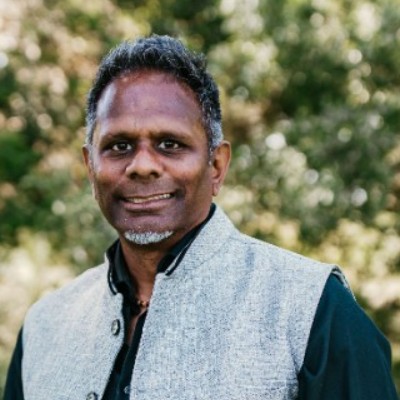
Daryl Pereira
Today's Guests
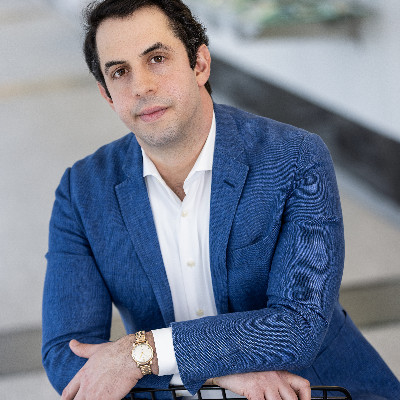
Michael Jacobs
